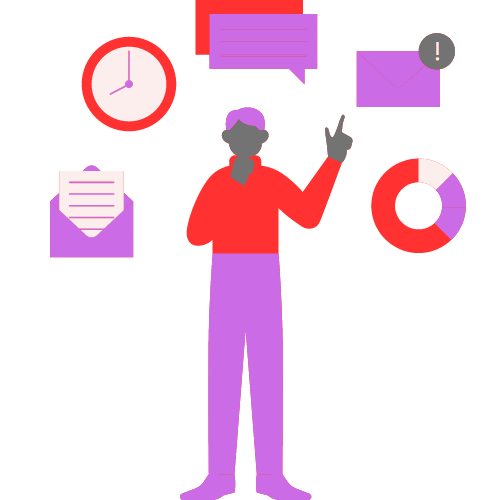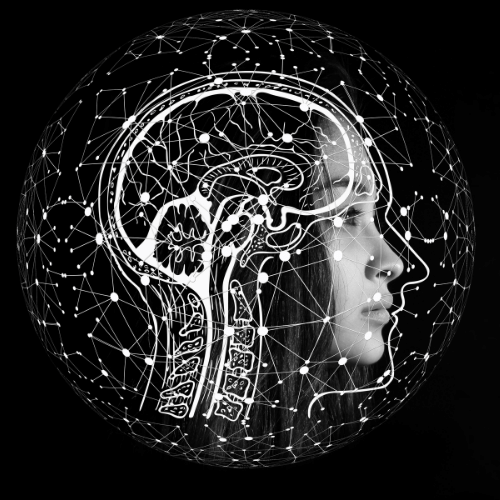Table of Contents
To begin with, what is the nature of the brain’s operation?
The brain performs many roles, including those of microprocessor, memory, and system software. The concept of a “left” and “right” brain emerged because its activities are too nuanced to be reduced to a simple yes-or-no list.
Similarly functioning left and right hemispheres make up the brain. Because each hemisphere governs the corresponding side of the body, the right side of the brain is responsible for the operation of the left hand. To a lesser extent, the left hemisphere relays sensory information to the right hemisphere and vice versa.
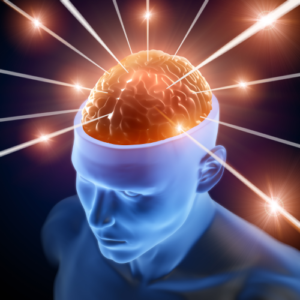
Lobes are the divisions between brain areas. Specific brain processes are compartmentalized by lobes.
Movements, character, problem-solving, focus, intention, emotional responses, smell, vocabulary knowledge, and general communication are all managed by the frontal lobe (front of the brain).
The senses of touch and pressure, taste, and kinesthetic awareness are all managed by the parietal lobe of your brain, which is located in the upper portion of your brain.
Auditory, social recognition, emotions, and long-term memory are all controlled by the temporal lobe (in the center of the brain).
The occipital lobe, located at the back of the brain, is responsible for vision.
Motor coordination function, stability, and synchronization are all regulated by the cerebellum (the brain’s lower backside).
• Emotions are regulated by the limbic system in the brain’s center.
Myth of the “Left Brain” and the “Right Brain”
In spite of the fact that there are, in fact, left and right sides of the brain, the terms’ oversaturation in the media has led to widespread confusion. The conventional wisdom holds that logical thought occurs in the left brain, whereas creative problem solving occurs in the right. Depending on their preferences and strengths, individuals often label themselves as being more “left brain” or “right brain” oriented.
The brain is more nuanced than the simplistic “left = rational” dichotomy, as has been revealed by recent scientific research. Split-brain procedures, used to treat epilepsy, didn’t allow researchers to examine each hemisphere of the brain independently until the 1960s.
The right hemisphere processes emotions and music more effectively, while the left is superior at speech and rhythms, according to scientific research. On the other hand, this doesn’t imply that the two parts have nothing in common.There are many reasons why the idea that the two hemispheres are completely different has persisted.
It satisfies the desire for order.
• It classifies people into distinct categories, much like astrological signs.
Most people have a preconceived notion that logic and originality are diametrically opposed concepts.
There is a widespread fascination with the concept of latent creative potential.
It’s been proposed that people tend to be more dominant on one half of their brain versus the other. According to this hypothesis, you are said to be left-brained if your way of thinking is mostly logical and systematic. It’s safe to assume that you’re more on the right side of the brain if you have a knack for the creative arts.
The theory is based on the assumption that the left and right sides of the brain perform separate tasks. Psychologist and Nobel laureate Roger W. Sperry was the first to discover this in the 1960s.
The left side of the brain is responsible for linguistic, analytical, and systematic thought. It’s been dubbed “the digital brain,” among other names. It excels at a variety of scholastic pursuits, including reading, writing, and arithmetic.
In contrast to the standard narrative, however, we see things a little bit differently.
The hemispheres of the human brain are roughly equally utilized. However, there are several distinct areas of the left and right sides of the brain that can have considerable influence.
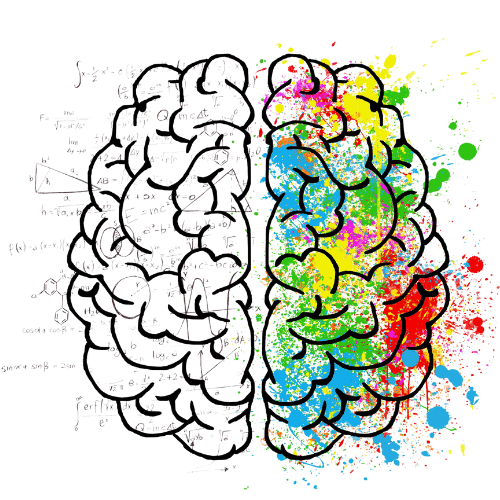
If a person’s right prefrontal lobe was eliminated, for instance, they would no longer be able to prioritize long-term gains over immediate ones, while those who had their left brain regions detached would show different symptoms (Lane & Nadel, 2002).
When it comes to thinking, seeing, feeling (both consciously and unconsciously), and overall mental well-being, as well as numerous other aspects of one’s personality and conduct, the two parts of the brain make somewhat distinct contributions.
Those who are left-handed tend to be more right-brained in their approach to controlling their bodies, which may contribute to their reputation as being more creative. There are many right-handed artists and many left-handed logical minds, so it’s clear that brain lateralization only goes so far.
Although there is some truth to the left brain versus right brain dominance dichotomy, it is oversimplified. Each side of the brain contributes to the whole, and the two hemispheres are in constant communication with one another through the central nervous system (Beaumont, 2008).
It cannot be said that one hemisphere of the brain is superior to the other because many mental tasks demand cooperation between the two. Overall, the brain is still a mystery, and researchers are still trying to figure it out (Halpern, 2005).
What we currently know about left brain vs. right brain dominance suggests specific tendencies, such as the preponderance of left-brained activities like language and reasoning, or right-brained activities like empathy and social cognition.
Nevertheless, these tendencies can run in the opposite direction in certain people or be more evenly distributed. Furthermore, the corresponding function on the other side of the brain is present. The brain is highly adaptable, and in the event of trauma or illness, it will pull resources from elsewhere, including the hemisphere on the opposite side of the skull (Pulsifer, 2004).
Although every mind is different, some people’s lateralization is distinct from others’, and the placement of functions can even change over time.
Yet, in theory, and according to Sperry’s studies, the left-brain aids in the following areas
- reasoning
- sequencing
- linear reasoning
- arithmetic
- truth
- Making a list of your ideas
Visualization and intuition are hallmarks of the right hemisphere. The term “analog brain” is occasionally used to describe it. Its mode of thinking is both more imaginative and less regimented.
According to Sperry’s findings, the right side of the brain is useful for
- vision
- “holistic” approach
- instincts
- design and art
- rhythm
- Indicators other than words
- mental imagery of emotions
- daydreaming
Advice on how to maintain mental acuity
The Alzheimer’s Association suggests that engaging in mentally taxing activities, such as acquiring a new skill, can have positive effects on brain functioning in the short and long run. They also imply that an increase in the probability of Alzheimer’s disease is associated with a lack of intellectual stimulation.

Some suggestions for mental exercise:
- Whether you’re a reader or writer, make time to do it every day.
- One should always be open to new information. Learn something new; enroll in a course, listen to a lecture, etc.
- Do difficult puzzles like crosswords and Sudoku.
- Take part in some competitive gaming, be it video, board, or card games.
- Start a new activity that will test your concentration, such as studying for a test or practicing an instrument.
- Brain health is enhanced by both mental and physical activities. Aerobic exercise “positively impacts” episodic memory in people 55 and older with dementia, according to a 2022 study review.
Maintaining optimal function of both hemispheres of the brain requires a focus on nutrition as well. Make an effort to consume a diet high in nutrients, such as
- wholesome cereals
- healthy, natural foods like fruits and veggies
- nuts
- Protein-rich foods like beans and lentils
- poultry
- fish
- And of course, try to get at least eight hours of sleep every night. One of the trusted ways to maintain a healthy brain, improve communication between neurons, flush out toxins that accumulate while awake, and maintain your memories intact is to get enough sleep.
Some suggestions for stimulating imaginative thought
Here are a few suggestions to help you start feeding your inner artist:
Learn from the insights of those who have thought creatively before you. Find the germ of an idea you can nurture, or let your own creativity run wild.
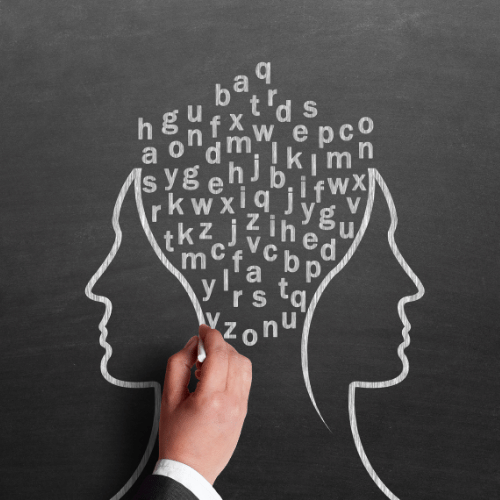
I encourage you to branch out. Pick up a creative pastime like learning an instrument, painting, or making up stories. Participating in a leisure activity of your choosing can encourage your thoughts to travel to interesting areas.
Focus inward. Having a better grasp of your own motivations and character traits is one benefit you can reap from doing this. What makes you choose some pursuits over others?
It’s important to keep things interesting. Get out of your routine and try something new. Get out of town and see the world. Put yourself in the shoes of someone from a different culture. Learn something new by enrolling in a class.
Some supplementary hints and tips
Always make note of creative inspirations and put some effort into developing them further.
Generate ideas. Always look for more than one answer when you’re trying to solve a problem.
Turn off the TV and allow your mind to wander while performing mundane tasks like washing the dishes.
Take some time out, unwind, and have some fun to spark your imagination.
It takes time, dedication, and effort to master even something as artistic as music. Your brain will change to accommodate the new data the further you practice a skill.
Finally, the bottom line is:
In recent years, the concept of “left-brained” and “right-brained” thinkers has gained traction, with the former attributed to more rational, analytical ways of thinking, and the latter to more creative, artistic approaches. Nonetheless, there is no evidence to back up this claim. It’s true that each hemisphere of the brain is responsible for certain activities, but they also often cooperate to do more. To varying degrees and for different purposes, most people engage both of their brain’s hemispheres.
Unfortunately, there is currently no way to definitively assess whether a person is more of a “left-brained” or “right-brained” thinker. Some so-called intelligence tests are based on out-of-date or inadequate understandings of how our brains work, so their results don’t fairly represent the complexity of the human mind.
The brain is an intricate entity, and its operation cannot be determined by a simple exam. The question of whether you are primarily “left-brained” or “right-brained” may be intriguing, but it is not useful for gaining insight into your skills or personality.
No matter if you’re more of a “numbers person” or an “artistic type,” this field of study won’t change your mind about yourself. However, attributing them to a single hemisphere of the brain is probably not appropriate. While much of what shapes an individual’s character remains a mystery, it is doubtful that whichever hemisphere of the brain happens to be more dominant is the primary factor.
https://psytify.com/personality-types/
